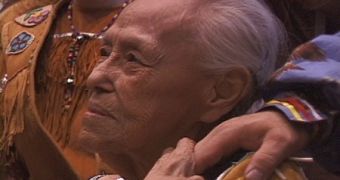The disappearance of Native languages has touched Alaska. Marie Smith Jones, the woman who was the last native speaker of the Eyak language of Alaska has died at the age of 89 in her home in Anchorage. She was a champion of indigenous rights and conservation and collaborated with the University of Alaska for creating an Eyak dictionary, a tool that could enable future generations to revive the language. Another 20 native Alaskan languages are at the brink of extinction.
"Ms Jones is described by her family as a tiny chain smoking woman who was fiercely independent. She believed passionately in preserving the Eyak language and wanted a written record of it to be kept so for future generations," said the BBC's Peter Bowes, in Los Angeles.
"To the best of our knowledge, she was the last full-blooded Eyak alive," her daughter Bernice Galloway told the AP. "She was a woman who faced incredible adversity in her life and overcame it. She was about as tenacious as you can get." The ancestral territory of the Eyak tribe runs along 500km (300 miles) at the mouth of the Copper River, in the Gulf of Alaska. Perhaps the most known tribes related to Eyak were Apache and Navajo.
Jones married a white Oregon fisherman, and the couple had nine children, seven of them still alive.
"But none of us learned Eyak because they grew up at a time when it was considered wrong to speak anything but English," said Bernice.
"She was very much alone as the last speaker of Eyak for the last 15 years. She understood as only someone in her unique position could, what it meant to be the last of her kind. It's the first, but probably not the last, at the rate things are going, of the Alaska Native languages to go extinct. She understood what was at stake and its significance, and bore that tragic mantle with grace and dignity," said Michael Krauss, a linguist and professor who worked with Jones.
Half of the world's existing 6,992 languages are forecast to disappear by the end of the century.

 14 DAY TRIAL //
14 DAY TRIAL //